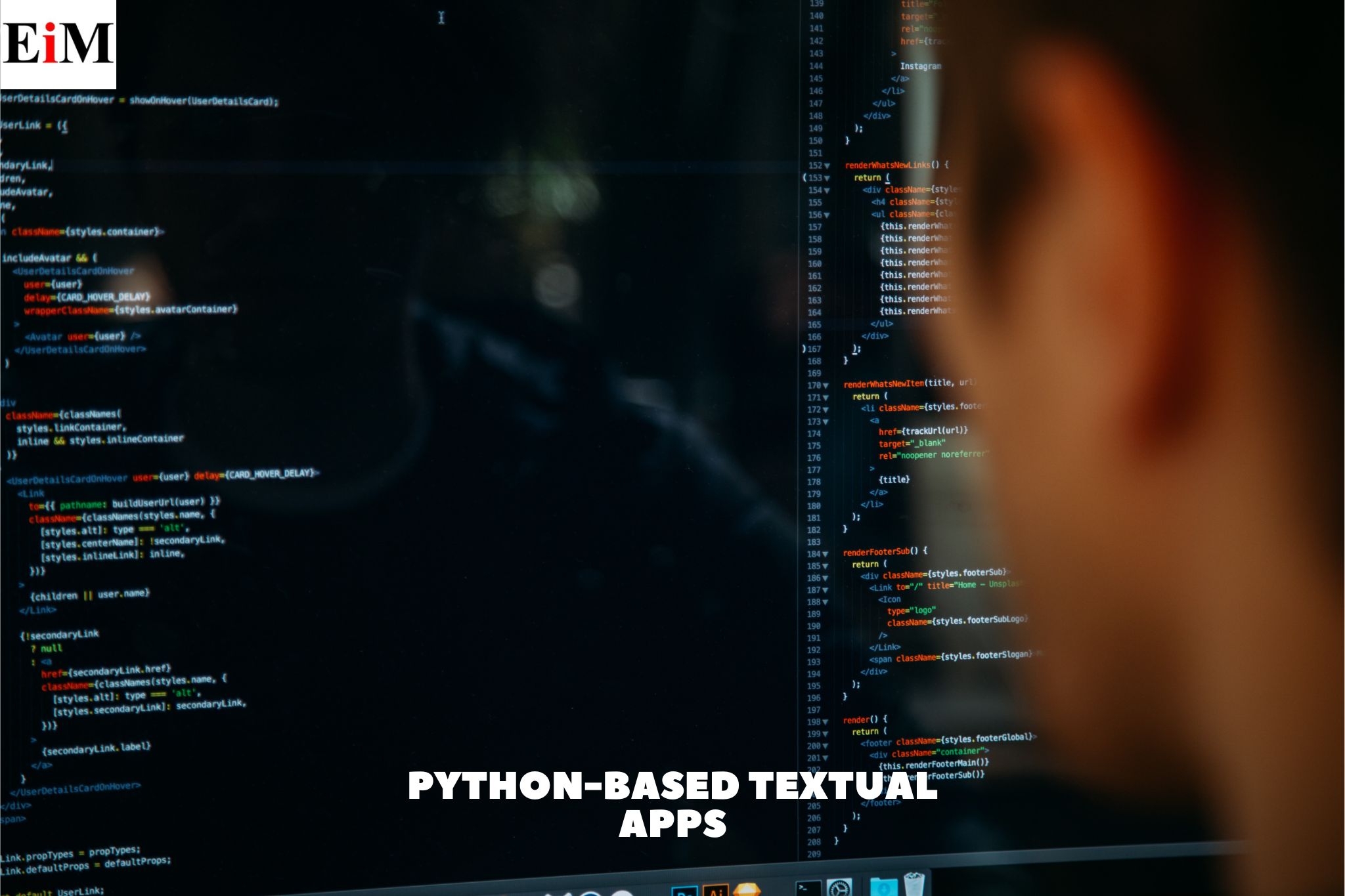
The world of web development is rapidly expanding, and Python, one of the most popular programming languages, is making substantial progress in this area. While Python has traditionally been associated with data science, machine learning (ML), and back-end programming, it is now rapidly being applied to build textual web apps. In this blog, we will look at the increasing prevalence of Python-based textual apps on the web and the benefits they provide for both developers and consumers. But first, let us get to know more about textual apps.
What Exactly Are Textual Apps?
Textual applications are programs that communicate with users using a text-based interface. They are sometimes known as command-line apps or CLIs (Command Line Interfaces). Unlike graphical user interface (GUI) applications, which rely on vivid features such as buttons and menus, textual apps accept and output text, making them very adaptable and accessible.
For decades, these apps have been a mainstay in software development, system management, and automation. They are used for a variety of functions, ranging from server management and version control to data processing and automation scripts. However, until recent times, their use on the web has been fairly limited.
The Function of Python in Textual Web Apps
Python's flexibility and ease of use make it an excellent choice for developing text-based web apps. Developers can use Python libraries to process and edit data, access web APIs, and conduct complex processes, all while displaying the results in a user-friendly text format.
The gigantic ecosystem of libraries available is one of the primary benefits of adopting Python for web-based textual applications. Click and Typer libraries make it easier to create command-line interfaces, while requests and “BeautifulSoup” make it simple to get and interpret online material. These tools together with Python's ease of use, allow developers to create powerful and efficient textual programs for a wide range of use cases.
Python-based Textual Web Apps: Use Cases
Python-based textual web apps can be used for a variety of purposes, including data extraction and analysis, content development, and automation. Here are a few examples:
- Data Scraping: Python applications may scrape data from websites and APIs to provide users with up-to-date information in a structured text format.
- Material Generation: Because textual apps may generate reports, documents, or material in a variety of formats, they are useful tools for content creators and publishers.
- Automation: Using a command-line interface, developers can construct scripts that automate repetitive operations such as file management, data processing, or system administration.
- Web Services: Python-based textual programs can work as web services, providing functionality such as URL shortening, language translation, and weather predictions using simple text-based requests.
The Advantages of a Python-based Textual Web App
The advent of Python-based textual web apps benefits both developers and users in various ways:
- Speed: Textual apps are frequently faster to build and execute than their GUI counterparts. Developers can concentrate on functionality rather than graphical design.
- Accessibility: Text-based interfaces are more accessible to a wider range of users, including people with impairments who rely on screen readers or other assistive devices.
- Resource Efficiency: Because textual apps utilize fewer system resources, they are appropriate for use in resource-constrained contexts or on server-side applications.
- Scripting and Automation: With these tools, users can effortlessly automate jobs by writing scripts, streamlining tedious processes, and enhancing productivity.
- Versatility: Textual programs can be executed in terminal emulators, SSH sessions, or integrated into web applications, giving them a wide range of applications.
Considerations and Challenges
While Python-based textual web apps have many advantages, they also have their own set of issues and concerns. When designing these applications, developers must consider security, input validation, and user experience design. Moreover, guaranteeing cross-platform interoperability and securely handling user input are critical to their success.
Conclusion
Python-based textual web apps are on the rise, broadening the scope of web development and bringing the simplicity and power of Python to a new arena. Their variety, usability, and efficiency make them valuable tools for both developers and users. As the need for simplified and text-based web apps grows, Python's presence in this sector is expected to become even more important, making this an exciting time for both Python enthusiasts and the broader web development community.
We hope you find this information useful. Kindly share this blog with your colleagues and friends and let us know your thoughts on “Python-based textual apps” in the comment section below. Please leave your feedback and suggestions; it will help us serve you better. If you have any questions or doubts feel free to contact us. Do visit our website and check out more articles. We suggest you subscribe to our weekly newsletter for more technology and security information.
For any software development-related queries, feel free to contact us at 406-646-2102 or Sales@ExcelliMatrix.com. We provide IT support and technological consultation, and you can benefit from partnering up with us. Stay connected with us on LinkedIn and Facebook, and follow us on Twitter for more information like this.